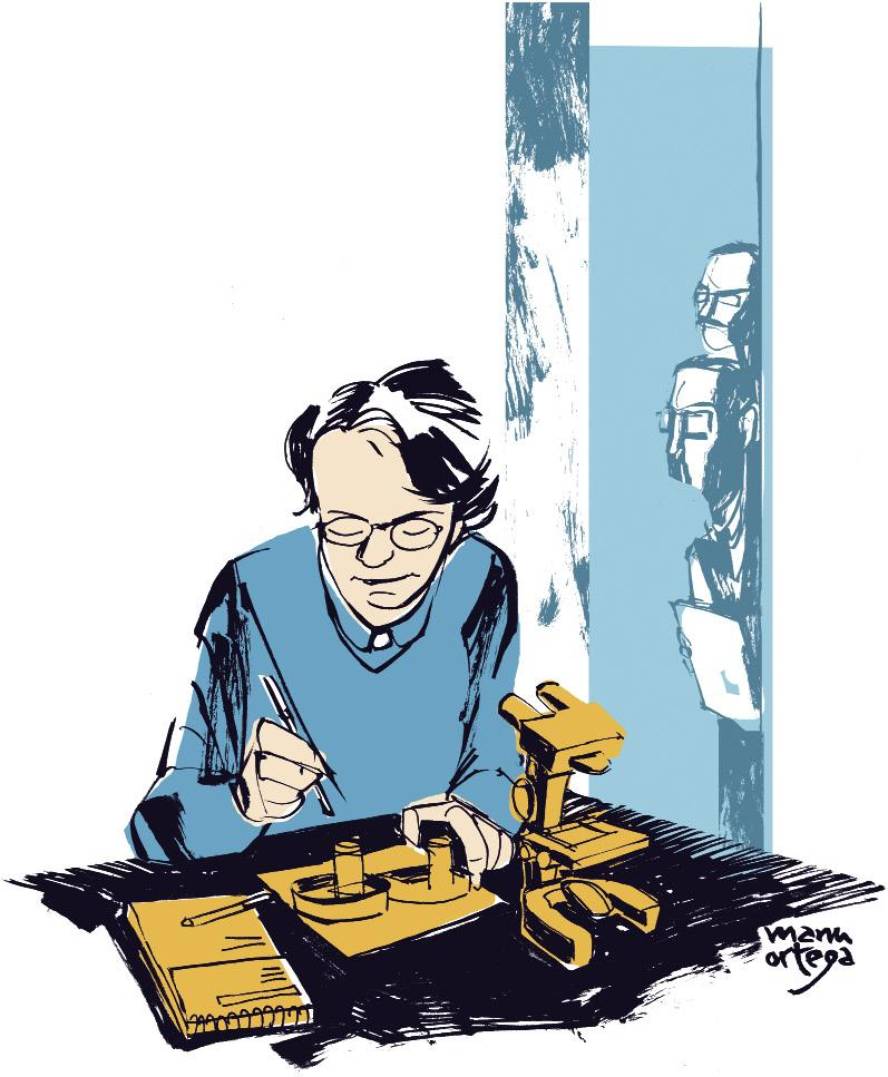Barbara McClintock, asks for the corn
Long Island (New York), late 1940s. A woman of about forty years irrigates the corn. Look at the dunes that gradually grow, as if I wanted to know all the secrets kept in them. Sast! A ball falls between the corn. She gets angry and throws the tan on young baseball. No wonder, this corn is worth a lot.
Bárbara McClintock cultivated maize in lands of the Cold Spring Harbor Laboratory. And he spent almost all his life studying his chromosomes and genes. He lived alone in a small apartment in the laboratory.
Since a child, he was solitary and liked sport and intellectual life. Parents did not like that character. In fact, she was born with the name of Leonor, but, considering that for this daughter she was too feminine a name, they put Barbara. Nor did he like his mother wanting to go to college because she would take away the options of getting married. But in the end he got it with the help of his father.
She studied Botany at the University, especially interested in genetics and was fascinated by chromosomes. In fact, in those years it was being discovered that chromosomes were carriers of ‘hereditary factors’. Thus, for his graduation he was clear that he wanted to investigate chromosomes, their genetic content and their expression, cytogenetics.
McClintock made it clear from the beginning that he was an extraordinary scientist. After the doctorate, he managed to gather on his own a small but strong team to investigate in this field. It was a completely new field and soon began to progress. “We were considered proud;, I would later remember McClintock. “We were much more advanced than those people and could not understand what we were dedicated to;.
McClintock developed a dyeing technique to visualize chromosomes under a microscope. This allowed, for the first time, to observe the morphology of the 10 maize chromosomes in 1929.
In the 1930s he discovered that chromosome pairs cross the parts by forming reproductive cells and showed that thanks to this crossing new combinations of hereditary characters are created. He also found a structure called nucleolar organization that seemed important to order genetic material in cell division. He also discovered centromer and telomere, and published the first genetic map of corn and analyzed how irradiation caused mutations...
McClintock's scientific fertility was one discovery after another. Recognizing this fertility, in 1944 he was appointed a member of the Academy of Sciences of the United States (third woman to achieve it) and, to the year, president of the American Association of Genetics (first woman). The others also admired, to the point of seeing it as almost a prophet: “If Barbara says so, it will be true”, they used to say.
McClintock began to investigate the effect of genetic mosaic at that time. I wanted to know why the specimens of the same cob could have a different color, with the same genetic information. During his intervention he discovered two genetic elements that acted on the genes. He noted that, despite being really surprising, these elements moved in place and could turn on or off genes. He called them controller elements and studied their influence from generation to generation. He suggested that genetic regulation could be key both to explain how cells in an organism can present different characteristics, although the genome was the same.
Everything was revolutionary, too revolutionary. The genome was thought to be a static, orderly set of guidelines, and the moving elements and genes that were off and fit were not acceptable. And they were not accepted. These discoveries and ideas gave rise to the “astonishment and discovery” of its members, in the words of McClintock.
“I was surprised to see that they did not understand it, that they did not take it seriously. But McClintock did not cease: “That did not bother me, I knew I was correctly” however, this kind of research stopped publishing and plunged into his own solitude. He saw it clear that it was not time to accept what he found. “For a conceptual change we must wait for the right time” said.
And he had to wait. Almost twenty more years, other researchers began to find those mobile elements in viruses, bacteria and even vinegar flies. And then they remembered McClintock. In 1983, at 82, he received the Nobel Prize for finding those mobile genetic elements (transposonas). She was the third woman to receive the Novel of Medicine and Physiology and the only one who received her alone. When he received the award he said: “It seems unfair to reward a person for having received so many pleasures over the years, asking corn for specific problems and then seeing their responses”.
He died at the age of ninety and continued to work until the last day, twelve hours a day, six days a week. He made it clear: “What I do interests me so much and is such a pleasure, that I have never thought to stop… I have had a very satisfying and interesting life”.
Bibliography:
BBC (2017): “¿Why the Nobel Prize was delayed by light by the Vareda&có>
KOLATA, G. (1992): “MARTÍNEZ PULIDO, C. 2014. “McCLINTOCK, B. (1983): “Barbara McClintock - Biographical”
RAVINDRAN, S. (2012): “Barbara McClintock and the span discoquinte&jums;







